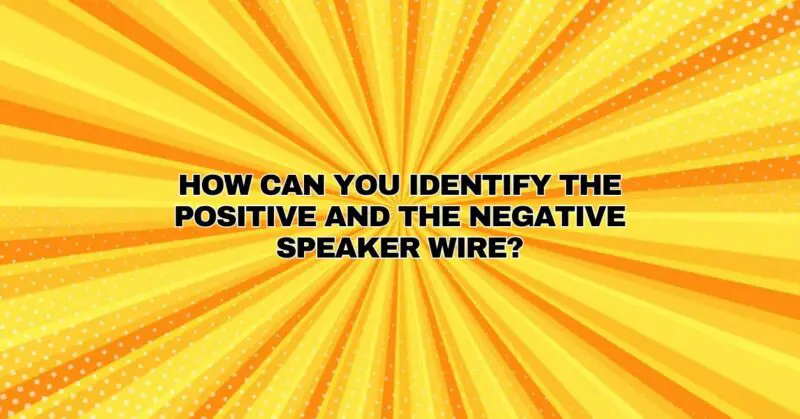When setting up a sound system, whether it’s for home audio, car audio, or professional applications, ensuring that you correctly identify the positive and negative speaker wires is crucial. Proper speaker wire polarity ensures that the audio signal flows in the right direction, allowing your speakers to produce accurate and clear sound. In this comprehensive guide, we’ll explore various methods for identifying positive and negative speaker wires, ranging from visual cues and color-coding to simple tests you can perform.
1. Visual Inspection
The most straightforward way to identify speaker wire polarity is through visual inspection. Speaker wires are typically color-coded to indicate polarity:
- Positive Wire: In most cases, the positive speaker wire is marked with a solid color, often red or black. However, color-coding can vary between manufacturers, so it’s essential to check the documentation or labels if you’re unsure.
- Negative Wire: The negative wire typically has a stripe or dashed pattern on the insulation. Common stripe colors include white or black, but, again, this can vary. Look for the wire with the striped or dashed pattern to identify the negative.
2. Labels and Markings
Many speaker cables come with labels or markings to indicate polarity. These labels might explicitly state “positive” or “negative,” or they may use symbols such as “+” and “-” to represent polarity. Check the cable itself for any printed information that provides clarity on wire identification.
3. Manufacturer Documentation
If you have the manufacturer’s documentation for your speaker wires or speaker terminals, it should provide detailed information about how to identify positive and negative wires. Manufacturer instructions are typically the most accurate source of information for a specific product.
4. Wire Gauge and Insulation
In some cases, speaker wires may not have color-coding, labels, or markings. In such situations, you can determine polarity by examining the wire gauge and insulation:
- Positive Wire: The positive wire is often slightly thicker than the negative wire. Check the thickness of the wires to identify the positive one.
- Negative Wire: The negative wire is typically thinner and may have more pronounced insulation markings, such as stripes or dashes.
5. Multimeter or Continuity Test
If you still can’t determine the polarity of your speaker wires using visual cues or documentation, you can use a multimeter or continuity tester:
- Set your multimeter or continuity tester to the “Continuity” or “Ohms” setting.
- Touch one probe of the tester to one end of the speaker wire.
- Touch the other probe to the other end of the wire.
- If the tester indicates continuity (i.e., it beeps or shows a low resistance reading), it means the probes are connected to the same wire. Mark this wire as either positive or negative.
- Repeat the test with the remaining wire to identify its polarity.
6. Trial and Error (Caution Advised)
While not the recommended method, some individuals use a trial-and-error approach to identify speaker wire polarity. Here’s how it works:
- Connect one wire to one terminal of the speaker.
- Temporarily touch the other wire to the opposite terminal.
- Play audio through the speaker at low volume.
- If the audio sounds clear and well-balanced, you have the wires correctly connected. If the audio sounds distorted or unbalanced, reverse the wires and test again.
This method can work, but it’s not ideal, as it may subject your equipment to potential damage if the wires are severely mismatched in polarity. Use this approach with caution and low volume levels.
Conclusion: Getting It Right
Identifying positive and negative speaker wires is a fundamental step in setting up a sound system correctly. While visual cues like color-coding are the most reliable methods, other approaches such as using a multimeter or following manufacturer documentation can also help ensure you get the polarity right. Taking the time to identify speaker wire polarity accurately will result in a better listening experience with clear and precise audio reproduction.

